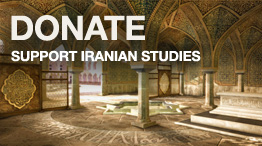The pictures of Mohammad Reza Shah at the tomb of the Achaemenid king Cyrus went around the world as part of the pompous celebrations marking the 2500th anniversary of the Iranian monarchy in 1971 and became a symbol of the nationalism in the Pahlavi state, emphasizing the country's pre-Islamic past and promoting a Westernized modernism. In stark contrast to such secularized forms of royal representation appear the photos of the shah in Mecca, showing him in pilgrim garb while performing his religious duty as a Muslim.
The different presentations of the shah point to the tension between religion and secularism inherent in official nationalism. While attempting to resolve this tension in various ways, the Pahlavi state adopted an ambivalent attitude toward Islam. On the one hand, it sought to suppress religious views that conflicted with modernization, as well as political opposition that legitimized itself through religion. On the other hand, Shiite Islam was promoted for nationalistic reasons because of its continued importance in culture and society.
This presentation examines the Shah's pilgrimages to Mecca and Mashhad, not with a focus on Mohammad Reza Pahlavi's personal piety, but on its representation in the Iranian media. How was the Shah represented when performing religious rituals? In what context did the coverage of his pilgrimages take place? What motives behind the state's appropriation of the religious aspect can be discerned?
The ruler's pilgrimage will thus serve as a case study that informs about the general religious policy of the Pahlavi State, which took Islam into account as an important identity-forming element in domestic and foreign politics.
The lecture will provide an insight into an ongoing research project at the University of Marburg which aims to critically examine the paradigm of the Pahlavi state’s anti-religious stance and analyze the religious policy during Mohammad Reza Shah’s reign.
